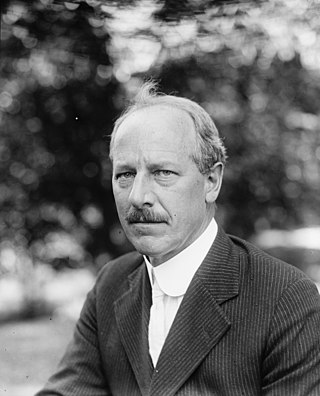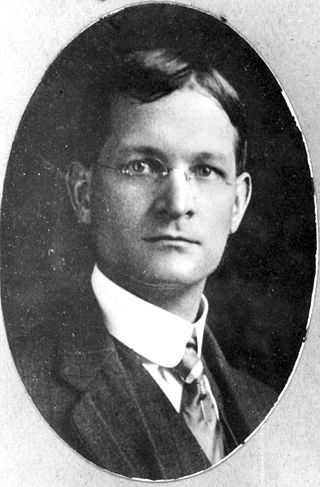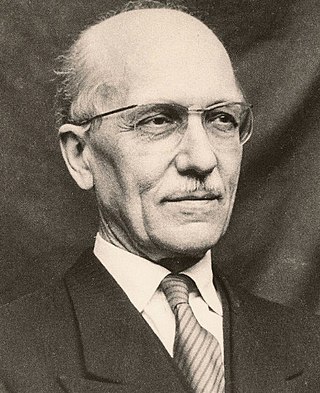Related Research Articles

Ore is natural rock or sediment that contains one or more valuable minerals concentrated above background levels, typically containing metals, that can be mined, treated and sold at a profit. The grade of ore refers to the concentration of the desired material it contains. The value of the metals or minerals a rock contains must be weighed against the cost of extraction to determine whether it is of sufficiently high grade to be worth mining, and is therefore considered an ore. A complex ore is one containing more than one valuable mineral.

Feldspar is a group of rock-forming aluminium tectosilicate minerals, also containing other cations such as sodium, calcium, potassium, or barium. The most common members of the feldspar group are the plagioclase (sodium-calcium) feldspars and the alkali (potassium-sodium) feldspars. Feldspars make up about 60% of the Earth's crust, and 41% of the Earth's continental crust by weight.

Jasper, an aggregate of microgranular quartz and/or cryptocrystalline chalcedony and other mineral phases, is an opaque, impure variety of silica, usually red, yellow, brown or green in color; and rarely blue. The common red color is due to iron(III) inclusions. Jasper breaks with a smooth surface and is used for ornamentation or as a gemstone. It can be highly polished and is used for items such as vases, seals, and snuff boxes. The specific gravity of jasper is typically 2.5 to 2.9. Jaspillite is a banded-iron-formation rock that often has distinctive bands of jasper.

Sphalerite is a sulfide mineral with the chemical formula (Zn,Fe)S. It is the most important ore of zinc. Sphalerite is found in a variety of deposit types, but it is primarily in sedimentary exhalative, Mississippi-Valley type, and volcanogenic massive sulfide deposits. It is found in association with galena, chalcopyrite, pyrite, calcite, dolomite, quartz, rhodochrosite, and fluorite.

Arthur Louis Day was an American geophysicist and volcanologist. He studied high temperature thermometry, seismology and geothermal energy.

Pyrrhotite is an iron sulfide mineral with the formula Fe(1-x)S. It is a nonstoichiometric variant of FeS, the mineral known as troilite. Pyrrhotite is also called magnetic pyrite, because the color is similar to pyrite and it is weakly magnetic. The magnetism decreases as the iron content decreases, and troilite is non-magnetic. Pyrrhotite is generally tabular and brassy/bronze in color with a metallic luster. The mineral occurs with mafic igneous rocks like norites, and may form from pyrite during metamorphic processes. Pyrrhottie is associated and mined with other sulfide minerals like pentlandite, pyrite, chalcopyrite, and magnetite, and has been found globally.

"Heroes" is the 12th studio album by the English musician David Bowie, released on 14 October 1977 through RCA Records. Recorded in collaboration with musician Brian Eno and producer Tony Visconti, it was the second release of his Berlin Trilogy, following Low, released in January the same year, and the only one wholly recorded in Berlin. Sessions took place in mid-1977 after Bowie completed work on Iggy Pop's second solo album Lust for Life. Much of the same personnel from Low returned for "Heroes", augmented by King Crimson guitarist Robert Fripp.

The Chugwater Formation is a mapped bedrock unit consisting primarily of red sandstone, in the states of Wyoming, Montana, and Colorado in the United States. It is recognized as a geologic formation in Colorado and Montana, but as a Group, the Chugwater Group, in Wyoming. Despite its presence below the highly studied Morrison Formation, the Chugwater receives little attention.
Alfred Edward "Ted" Ringwood FRS FAA was an Australian experimental geophysicist and geochemist, and the 1988 recipient of the Wollaston Medal.
Edward Ching-Te Chao was one of the founders of the field of impact metamorphism, the study of the effects of meteorite impacts on the Earth's crust.

Drysdallite is a rare molybdenum selenium sulfide mineral with formula Mo(Se,S)2. It crystallizes in the hexagonal system as small pyramidal crystals or in cleavable masses. It is an opaque metallic mineral with a Mohs hardness of 1 to 1.5 and a specific gravity of 6.25. Like molybdenite it is pliable with perfect cleavage.
Bowieite is a rhodium-iridium-platinum sulfide mineral (Rh,Ir,Pt)2S3, found in platinum-alloy nuggets from Goodnews Bay, Alaska. It was named after the British scientist Stanley Bowie (1917–2008), in recognition of his work on identification of opaque minerals.
Louis Jean-Pierre Cabri (born February 23, 1934 in Cairo) is an eminent Canadian scientist in the field of platinum group elements (PGE) mineralogy with expertise in precious metal mineralogy and base metals at the Canada Centre for Mineral and Energy Technology (CANMET). First as Research Scientist and later as Principal Scientist (1996–1999). In the 1970s he discovered two new Cu–Fe sulfide minerals, "mooihoekite" and "haycockite". In 1983 Russian mineralogists named a new mineral after him: cabriite (Pd2SnCu).
Naldrettite is a mineral with a chemical formula of Pd2Sb. It is named after Anthony J. Naldrett (born 1933), a professor at the University of Toronto, who has made significant contributions to the International Mineralogical Association (IMA). Naldrettite is a new intermetallic mineral from the Mesamax Northwest deposit, Ungava region, Québec, Canada. Mineralization takes place around the base of basaltic dyke margins. Naldrettite is economically important because of its chemical composition (Pd2Sb). The sample in which the new mineral was discovered had high platinum group elements (PGEs) with palladium enrichment.

Nuummite is a rare metamorphic rock that consists of the amphibole minerals gedrite and anthophyllite. It is named after the area of Nuuk in Greenland, where it was found.
Grayite, ThPO4·(H2O), is a thorium phosphate mineral of the Rabdophane group first discovered in 1957 by S.H.U. Bowie in Rhodesia. It is of moderate hardness occurring occasionally in aggregates of hexagonal crystals occasionally but more commonly in microgranular/cryptocrystalline masses. Due to its thorium content, grayite displays some radioactivity although it is only moderate and the mineral displays powder XRD peaks without any metamict-like effects. The color of grayite is most commonly observed as a light to dark reddish brown but has also been observed as lighter yellows with grayish tints. It has a low to moderate hardness with a Mohs hardness of 3–4 and has a specific gravity of 3.7–4.3. It has been found in both intrusive igneous and sedimentary environments.

Michael Fleischer was an American chemist and mineralogist. He worked as a geochemist with the U.S. Geological Survey from 1939 to 1978. He published a huge number of chemical abstracts and reviews of proposed mineral names, and is known for his authoritative Glossary of Mineral Species, first published in 1971.
Stanley Robert Hart is an American geologist, geochemist, leading international expert on mantle isotope geochemistry, and pioneer of chemical geodynamics.

Esper Signius Larsen, Jr. was an American geologist and petrologist who contributed to techniques for age estimation using the lead-uranium ratio or Larsen method and the petrological study of non-opaque minerals using optical microscopy techniques. He served as a professor of petrology at Harvard University from 1923 to 1949. The mineral Esperite was named after him.

Jean François Orcel was a French mineralogist who contributed to the French nuclear energy program following the discovery of Uranium vanadate deposits in Morocco. He served as a mineralogist at the Muséum National d’Histoire Naturelle in Paris. He later specialized in the chemistry of meteorites.
References
- ↑ Davison, Phil (20 October 2008). "Stanley Bowie: Geochemist" . Retrieved 31 May 2012.